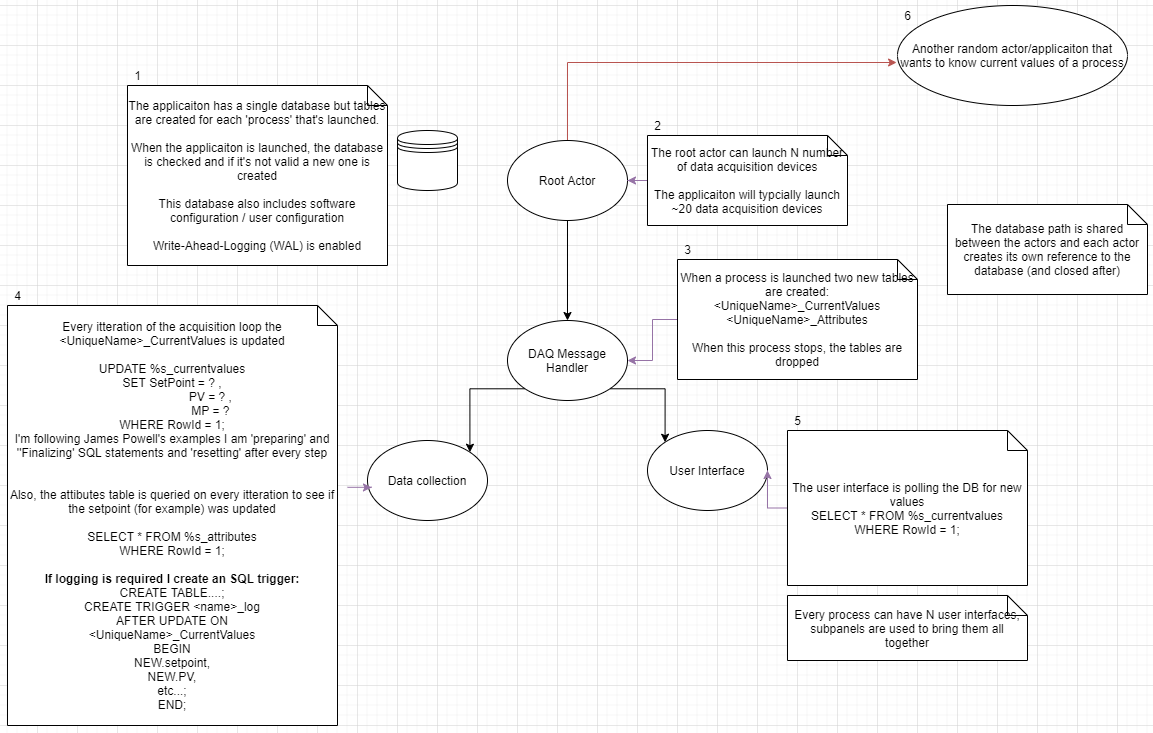Search the Community
Showing results for tags 'sqlite3'.
-
Currently, my vision software will do a compression (subtract to background image then count zero) and write to a table in SQLite file. Since we want to speed up the process, I write entire image in a temporary table. Then at the end, I read the table, do compression and write to the actual table, then drop the temporary table. This takes a lot of time too even I use the Journal mode = memory. I think the issue is I put the process code in 4 separated modules: Select the temp table -> output array Compress the output array of step 1 Insert the compress data from step 2 to actual table Drop the temp table I am looking for an option to mix these steps together to speed up the speed for example select and delete the row in temp table at the same time then at the end I can drop the table faster. Currently, it takes significant time to drop the table. Our raw data can be up to 3GB. But I don't know how to combine the query. I also read that SQlite does not support this. So I also looking for an advice on how to make this process more efficient. I thought about using the queue too but I need input before I change it. Thank you in advance.
-
Hi Everyone, I (re)watched James Powell's talk at GDevCon#2 about Application Design Around SQLite. I really like this idea as I have an application with lots of data (from serial devices and software configuration) that's all needed in several areas of the application (and external applications) and his talk was a 'light-bulb' moment where I thought I could have a centralized SQLite database that all the modules could access to select / update data. He said the database could be the 'model' in the model-view-controller design pattern because the database is very fast. So you can collect data in one actor and publish it directly to the DB, and have another actor read the data directly from the DB, with a benefit of having another application being able to view the data. Link to James' talk: https://www.youtube.com/watch?v=i4_l-UuWtPY&t=1241s) I created a basic proof of concept which launches N-processes to generate-data (publish to database) and others to act as a UI (read data from database and update configuration settings in the DB (like set-point)). However after launching a couple of processes I ran into 'Database is locked (error 5) ', and I realized 2 things, SQLite databases aren't magically able to have n-concurrent readers/writers , and I'm not using them right...(I hope). I've created a schematic (attached) to show what I did in the PoC (that was getting 'Database is locked (error 5)' errors). I'm a solo-developer (and SQLite first-timer*) and would really appreciate it if someone could look over the schematic and give me guidance on how it should be done. There's a lot more to the actual application, but I think once I understand the limitations of the DB I'll be able to work with it. *I've done SQL training courses. In the actual application, the UI and business logic are on two completely separate branches (I only connected them to a single actor for the PoC) Some general questions / thoughts I had: Is the SQLite based application design something worth perusing / is it a sensible design choice? Instead of creating lots of tables (when I launch the actors) should I instead make separate databases? - to reduce the number of requests per DB? (I shouldn't think so... but worth asking) When generating data, I'm using UPDATE to change a single row in a table (current value), I'm then reading that single row in other areas of code. (Then if logging is needed, I create a trigger to copy the data to a separate table) Would it be better if I INSERT data and have the other modules read the max RowId for the current value and periodically delete rows? The more clones I had, the slower the UI seemed to update (should have been 10 times/second, but reduced to updating every 3 seconds). I was under the impression that you can do thousands of transactions per second, so I think I'm querying the DB inefficiently. The two main reasons why I like the database approach are: External applications will need to 'tap-into' the data, if they could get to it via an SQL query - that would be ideal. Data-logging is a big part of the application. Any advice you can give would be much appreciated. Cheers, Tom (I'm using quite a few reuse libraries so I can't easily share the code, however, if it would be beneficial, I could re-work the PoC to just use 'Core-LabVIEW' and James Powell's SQLite API)
-
I can't call the following dll function .... int sqlite3_open( const char *filename, /* Database filename (UTF-8) */ sqlite3 **ppDb /* OUT: SQLite db handle */);




